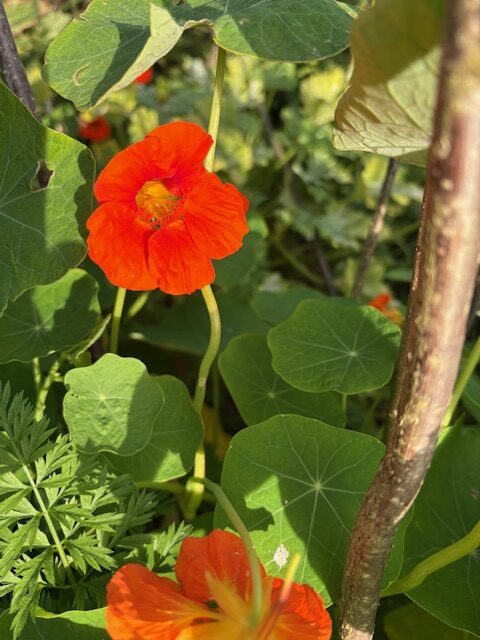
My nasturtiums have snaked all over the beds, with lightbulbs of radiant yellow and orange flowers everywhere. These plants, so easy to grow and so generous with colour in the late summer, have a lot to offer the home herbalist. Rich in vitamin C, they support immunity and wound healing.
The flowers contain lutein, which protects our eyes from age related macular degeneration, improving visual performance and helping the eye to recover from screen fatigue.
The leaves are anti-bacterial, anti-fungal, and possibly anti-viral. This is due to the mustard-like glucotropaeolin, which is excreted via the bladder and the lungs – thus especially helpful for bladder, as well as upper and lower respiratory tract infections. Glucotropaeolin is heat stable, but the enzyme which breaks it down into its active form is heat sensitive, so the best way to use it is as a raw food – i.e. in your salads; or make a pesto, and freeze for later in the year. Studies have shown that these effects are even more effective when taken with another mustard-molecule rich plant – Horseradish.
